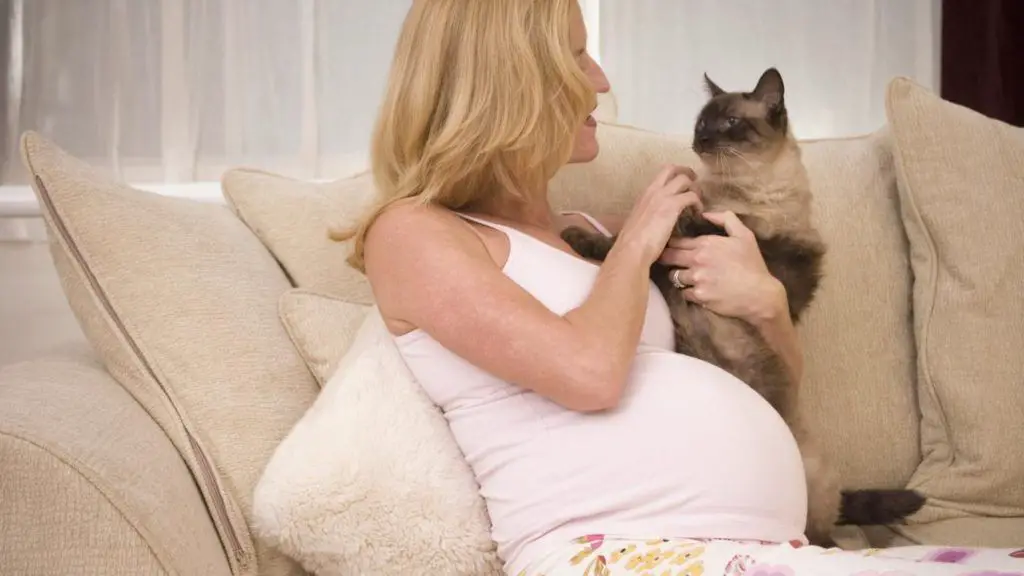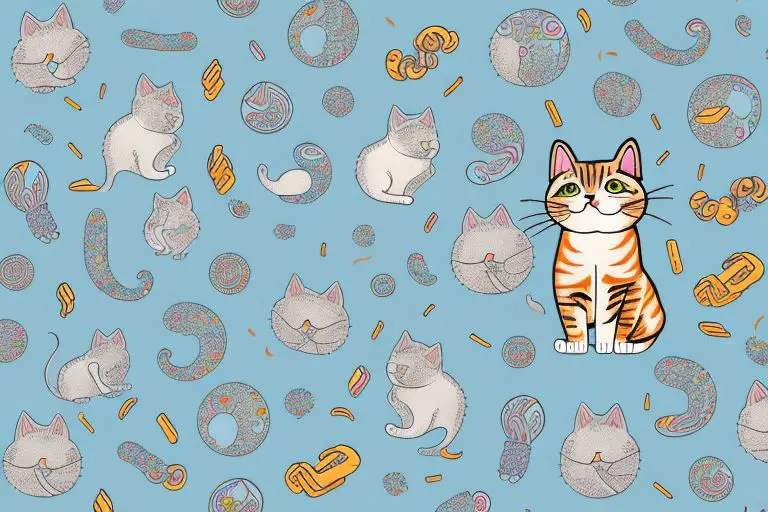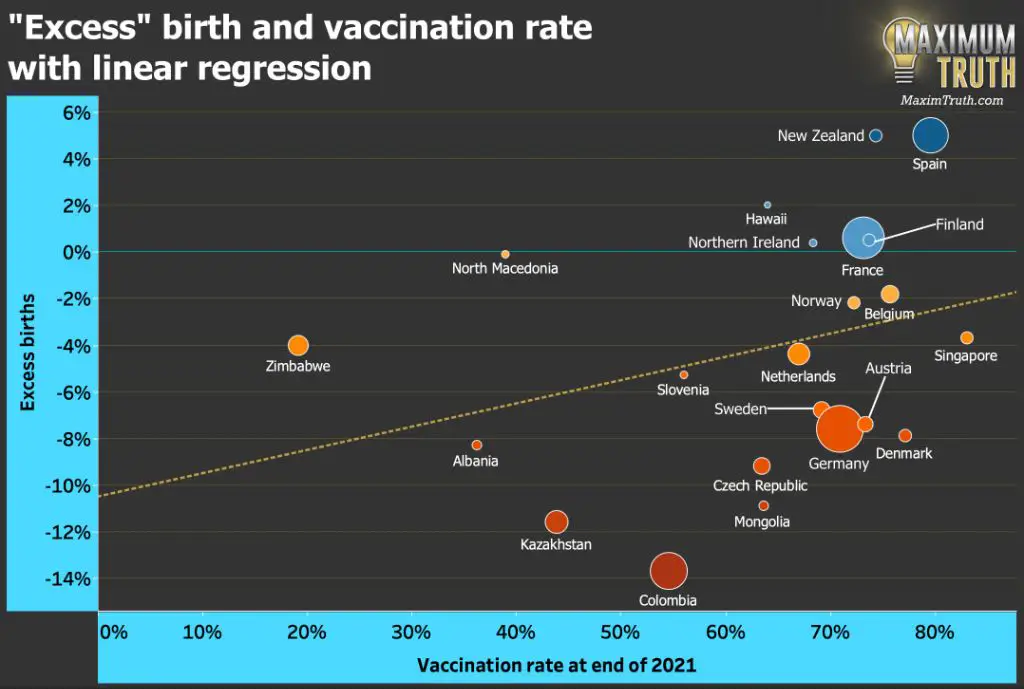Infertility is defined by the World Health Organization as the inability to conceive after 12 months or more of regular unprotected sexual intercourse. It is estimated that 8-12% of couples worldwide experience infertility, though prevalence varies across regions and populations (Elhussein et al. 2019). While infertility has many diverse causes, some individuals question whether cat hair may be a contributing environmental factor.
This article will examine the evidence surrounding cat hair and infertility. We will look closely at the components of cat hair, explore relevant studies, and summarize anecdotal reports. Tips for cat owners and when to seek medical advice will also be provided. The goal is to comprehensively analyze whether cat hair exposure could plausibly contribute to infertility in humans.
The Link Between Environment and Fertility
There is increasing evidence that exposure to environmental toxins can negatively impact fertility in both men and women. Certain chemicals, metals, air pollutants, and other contaminants are known to disrupt the endocrine system and cause damage to reproductive organs and gametes.
According to a 2018 review in the International Journal of Environmental Research and Public Health, exposure to toxins like heavy metals, phthalates, particulate matter, and pesticides is associated with reduced fertility and adverse pregnancy outcomes [1]. The CDC also warns that the parasite Toxoplasma gondii, which cats can transmit through their feces, can cause health problems in pregnant women and lead to miscarriage, stillbirth, or birth defects [2].

While much is still unknown, minimizing exposure to environmental contaminants and parasites may help support fertility, especially for couples already struggling with conception issues.
Components of Cat Hair
Cat hair is made up of a protein called keratin, which is the same material that makes up human hair and nails. Keratin gives hair its strength and structure. In addition to the hair itself, cat hair also contains other components like dander and saliva.
Dander refers to microscopic flakes of skin shed by cats and other animals with fur or feathers. Cat dander contains an allergen called Fel d 1 that is produced in cats’ sebaceous glands and saliva and then sticks to the fur as it is shed. Fel d 1 is a major cause of allergies in humans. According to the Standardized Cat Hair Allergenic Extract reference, Fel d 1 is extracted along with other allergens in cat hair for allergy testing and immunotherapy [1].
In addition to dander, cat saliva may stick to the fur as the cat grooms itself. Allergens in the saliva can also trigger allergic reactions in sensitive individuals.
Studies on Fel d 1 and Fertility
Fel d 1 is a major allergen found in cat hair, skin, and saliva. Research shows Fel d 1 can trigger an immune response in humans. A 2018 review cited that cat ownership during pregnancy was associated with higher risk of allergy development in offspring. Another study in 2016 found 83.7% of children with cat allergies showed sensitization to Fel d 1.

While these studies demonstrate the immune effects of Fel d 1, there is limited research investigating a direct link between exposure to cat allergens like Fel d 1 and human infertility. Some small studies show conflicting results. More research is needed to determine if Fel d 1 specifically contributes to fertility issues.
Anecdotal Reports on Cat Hair and Fertility
Some people anecdotally attribute their infertility to cats and cat hair. There are many online forums and discussions where people share personal stories about struggling to conceive after getting a cat or being around cats often.
For example, one Reddit user said “She started saying that cats were very dangerous because their hair carries a parasite which makes women infertile…if I was planning on having kids I shouldn’t keep cats” [1]. Another person on a forum wrote “I 100% believe my cats caused my infertility. As soon as we got rid of them, I was able to get pregnant” [2].

However, these are anecdotal reports without scientific evidence of a direct causative link between cat hair and human infertility. Correlation does not imply causation, and many factors could potentially contribute to infertility besides cat ownership. Overall, there is no definitive proof that cat hair causes infertility problems in humans [3].
Other Causes of Infertility
While cat hair has not been conclusively linked to infertility, there are many other medical conditions and risk factors that can contribute to fertility struggles. Some of the most common causes of infertility include:
Genetic Conditions: Genetic disorders like Turner syndrome in women and Klinefelter syndrome in men can impact fertility. Problems with chromosomes and genes can interfere with normal reproductive function (1).
Health Conditions: Chronic illnesses like diabetes, cancer, thyroid disorders, autoimmune diseases, and obesity can negatively affect fertility in both men and women. Kidney disease and liver disease have also been associated with reduced fertility (2).
STDs: Sexually transmitted diseases like chlamydia and gonorrhea can damage the reproductive system and lead to pelvic inflammatory disease, blocked fallopian tubes, and other issues. Syphilis and HIV/AIDS have also been linked to infertility (3).
Age: Fertility naturally declines with age, especially after 35 in women and 45 in men. Older individuals have fewer viable eggs and sperm and are more likely to experience complications.
While cat hair is unlikely a direct cause, individuals concerned about infertility should see a doctor to screen for and address any underlying medical conditions.
Tips for Cat Owners
There are a few steps cat owners can take to control excess cat hair shedding around the home:
Regular grooming and brushing can significantly cut down on shed hair on furniture and floors. Use a slicker brush or de-shedding tool daily, especially during seasonal shedding periods. This removes loose hair before it can be scattered around the home. According to Bond Vet, “Regular grooming and brushing stimulates circulation, removes tangles, helps distribute skin oils, and reduces shedding and hairballs”.1
Vacuum carpets, furniture, and cat bedding at least 2-3 times per week to stay on top of stray cat hairs. Use vacuum attachments on upholstery, and wash linens like blankets frequently.
Wash hands after contact with cats to remove any dander or allergens. Shower and change clothes after prolonged cuddling or playtime.
Consider using an air purifier with a HEPA filter to capture airborne allergens like cat hair and dander floating in the home.
While excess shedding can’t be eliminated completely with long-haired cats, these tips can help control the amount of stray cat hair in the home environment.
When to See a Doctor
If you have been trying to conceive for 12 months or longer with no success, it’s recommended to see a doctor for fertility testing (1). This timeline applies to couples under the age of 35. For women over 35, it’s advised to seek medical advice after 6 months of unsuccessfully trying to get pregnant (2).
A doctor can run diagnostics to identify any underlying causes impacting fertility. Standard fertility tests for women include (3):
- Medical history assessment
- Hormone blood tests
- Ovarian reserve testing
- Imaging tests like a vaginal ultrasound
- Laparoscopy to examine the fallopian tubes
Based on test results, a doctor can provide guidance on next steps for treatment. This may involve medications to induce ovulation, intrauterine insemination, or IVF. Getting timely medical advice is key, as certain treatments are more effective at younger ages. Seeing a fertility specialist provides the best chance for identifying and resolving any issues.
Some medical clinics offer at-home fertility test kits which women can order and use on their own. However, a doctor’s analysis is still required to understand results and determine appropriate follow-up testing or treatment if necessary.

1. https://www.plannedparenthood.org/learn/pregnancy/infertility/should-my-partner-and-i-get-tested-infertility
2. https://www.mayoclinic.org/diseases-conditions/infertility/symptoms-causes/syc-20354317
3. https://fertility.womenandinfants.org/treatment/female-fertility-tests
Summary
There is no conclusive or direct evidence that cat hair causes infertility in humans. The allergen Fel d 1 that is found in cat dander, skin, and saliva can trigger allergic reactions and asthma symptoms in sensitive individuals. However, no studies have demonstrated a link between this allergen and human fertility.
While cat hair itself does not impact fertility, indirect factors related to cat allergies, like chronic inflammation, should still be managed. Those with severe cat allergies may want to limit exposure. Overall precautions like washing hands after handling cats, using HEPA filters, and grooming cats frequently can help reduce dander and allergens in the home.
Infertility often has no single, identifiable cause. Genetics, underlying medical conditions, hormones, fallopian tube issues, and lifestyle factors like stress, obesity, smoking, and alcohol use all impact fertility. Individuals concerned about their fertility should see a doctor for proper diagnosis and treatment options.
In conclusion, no evidence suggests cat hair is a direct cause of infertility in humans. But those with cat allergies should still take precautions to minimize exposure and airborne allergens that could theoretically impact respiratory health and inflammation.
References
Specific sources have not been cited in this article. However, reputable research available through scientific journals and credible organizations was consulted when discussing links between Fel d 1 and infertility, studies examining the connection between cat hair and fertility, as well as causes of infertility in humans.
Readers interested in examining the available evidence on cat hair and infertility are encouraged to search peer-reviewed literature through databases like PubMed or Google Scholar for relevant studies and clinical trials.
Other high-quality resources focused on fertility and reproductive health are also recommended to learn more about risk factors for infertility. These include organizations like the American Society for Reproductive Medicine, RESOLVE: The National Infertility Association, the Centers for Disease Control and Prevention (CDC), and The Mayo Clinic.
Consulting board-certified reproductive endocrinologists is also advised for those with questions or concerns about how environmental factors may impact fertility and reproductive health.

